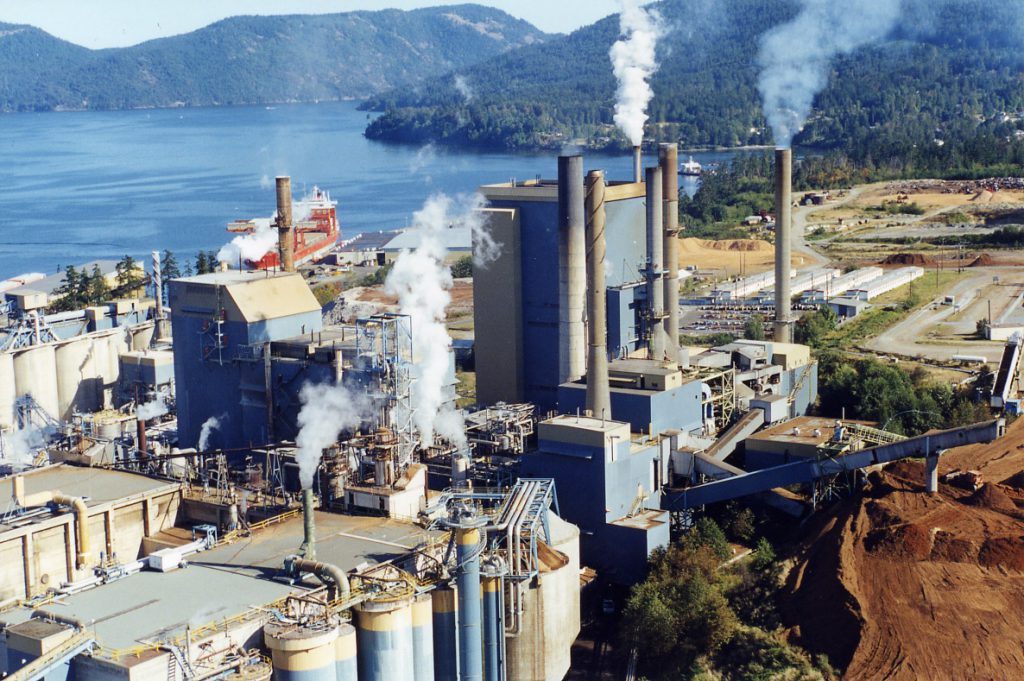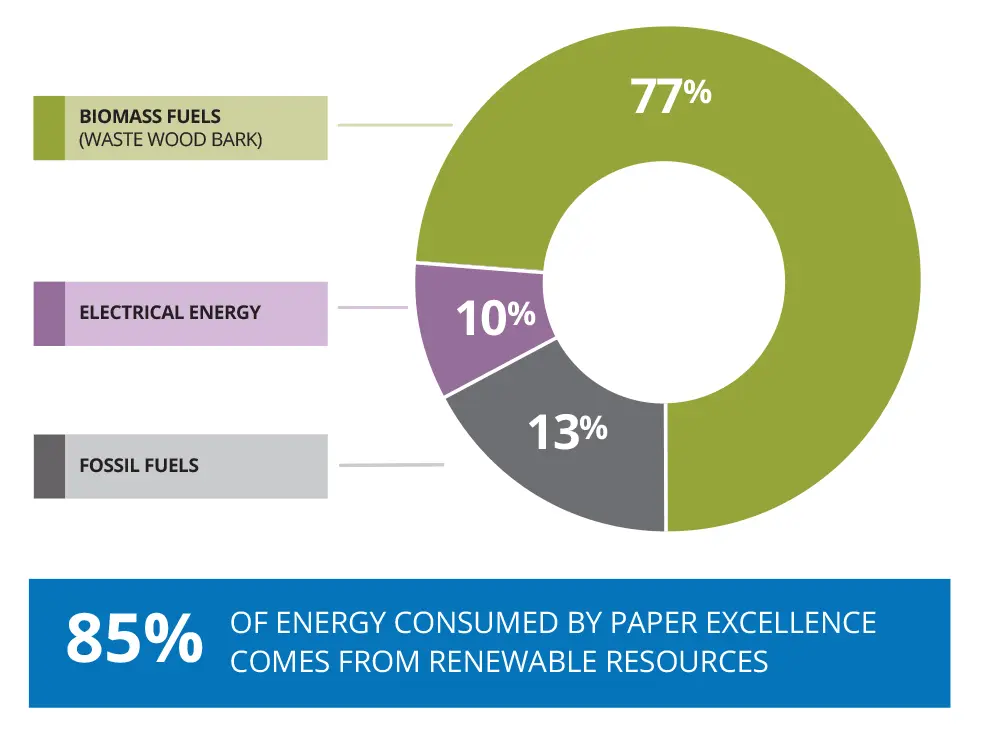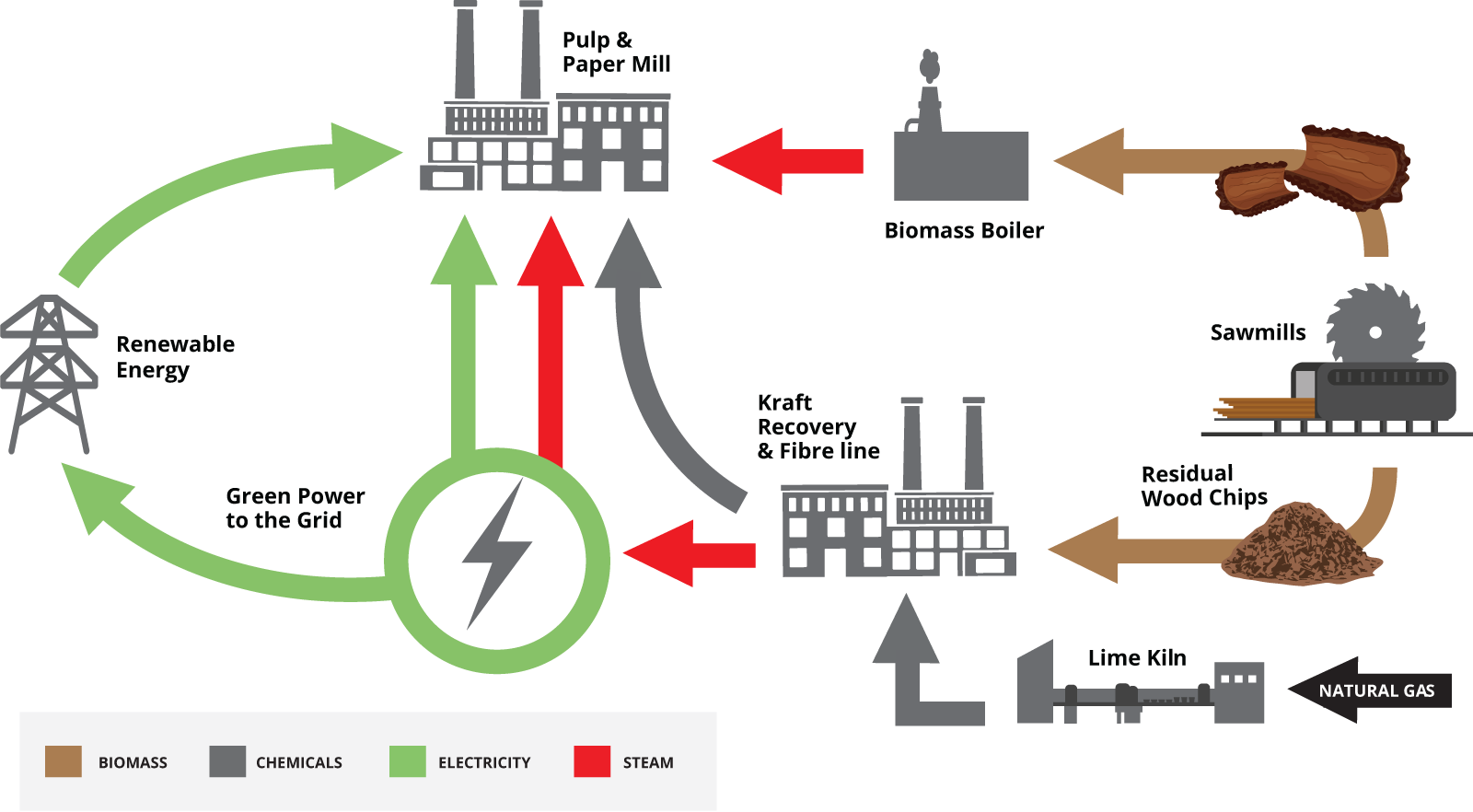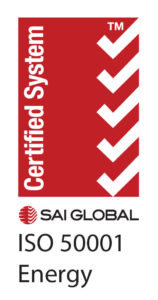MANAGING RENEWABLE ENERGY PRODUCTION
Making pulp and paper is energy intensive. It takes a lot of energy to convert wood chips into fibres and even more energy to dry those fibres so they become pulp or paper. Paper Excellence does an incredible job of reusing and recovering energy, but we still need a great deal to operate the system. This energy is produced from three sources: biomass, fuel and electricity.

ENERGY SOURCES
We receive energy in the form of fuels or electricity. Fuels are burned to generate heat and make steam. Steam is used throughout the process to dry pulp and paper and make electricity. A steam turbine takes high pressure steam from the boilers and converts some of the energy to electricity while reducing the pressure to levels that can be used in the process. This electricity is both produced and consumed in the mill and any excess is sent back to the electrical grid.
There are two typical types of steam generating boilers at our mill sites:
Recovery Boiler: takes used pulping liquor from the Kraft process and simultaneously “recovers” the pulping chemicals and incinerates organic materials to produce high pressure steam. This chemical recovery process involves a lime kiln, which is the primary consumer of natural gas at our mills.
Biomass Boiler: burns primarily bark and other wood residues that are produced during the milling process and trucked and barged to our mills.


Since 1990, our company and our facilities have eliminated almost 2 million tonnes of greenhouse gases through modernization projects and closure of old, inefficient mills; equivalent to taking about 500,000 cars permanently off the road.

We self-generate enough green electricity to support consumption from 200,000 typical North American family homes.

Our energy basket is made up of 85% renewable sources like biomass fuel and hydroelectric power. On average, US renewable energy makes up only 17% of the grid.

Since 1990 Paper Excellence has reduced carbon emissions by 60%.
ENERGY MANAGEMENT
Paper Excellence mills have control rooms that measure and track all the energy entering and flowing through our process in real time. Our operating crews are trained to monitor the use of energy and take steps to reduce when the process is operating outside of its targeted range. We use the data from our real time energy data to calculate what our greenhouse gas (GHG) impact will be.



INTERNATIONAL STANDARDS
Our Crofton facility is certified to ISO 50001:2018, which is the international standard for energy management systems. Our aim is to follow a systematic approach in achieving continual improvement of energy performance, including energy efficiency, use and consumption.
